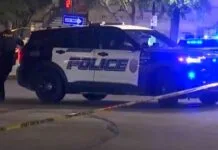Economic downturns are a recurring feature of modern economies, often causing widespread anxiety and hardship. As recessions and financial crises unfold, one troubling trend frequently observed is the rise in crime rates. The link between economic instability and increased criminal activity is a complex interplay of social, psychological, and economic factors. This article explores how economic downturns contribute to rising crime rates, shedding light on the underlying mechanisms and offering insights into potential solutions.
Economic Pressures and Crime Rates: An Overview
Economic downturns have long been associated with a rise in crime rates, a phenomenon that has been extensively studied by economists, sociologists, and criminologists. When economies falter, individuals and families face heightened financial stress, job losses, and reduced access to essential services. These conditions can exacerbate social tensions and contribute to an increase in criminal behavior. For instance, the financial strain experienced during such times may drive individuals to commit crimes such as theft, burglary, or fraud as a means of survival. As highlighted by sources like crazyvegas.com, the pressures of financial instability can erode social cohesion and lead to increased criminal activity.
The Impact of Unemployment on Crime
One of the most direct ways in which economic downturns affect crime rates is through rising unemployment. High unemployment rates are often a hallmark of economic recessions, and they can have profound effects on communities. Individuals who lose their jobs may experience financial distress, which can contribute to criminal behavior.
Research has shown that there is a strong correlation between unemployment and crime rates. For instance, a study by the National Bureau of Economic Research found that a 1% increase in the unemployment rate is associated with a 1.5% increase in property crime rates. The relationship between unemployment and crime is particularly pronounced in areas with high poverty rates and limited access to social services.
Furthermore, unemployment can lead to increased rates of mental health issues, such as depression and anxiety. These conditions can further exacerbate the likelihood of criminal behavior, as individuals struggling with mental health issues may be more prone to engaging in illegal activities.
Social Inequality and Crime
Economic downturns often exacerbate existing social inequalities, which can contribute to rising crime rates. During recessions, low-income and marginalized communities are disproportionately affected by job losses and economic hardship. This disparity can lead to increased social tensions and higher crime rates in these communities.
The link between social inequality and crime is well-documented. Research has shown that areas with higher levels of income inequality tend to have higher crime rates. This is because economic disparities can create environments of resentment and social friction, which can lead to criminal behavior. When economic downturns worsen these disparities, the resulting social strain can contribute to a rise in crime.
The Role of Reduced Public Services
Economic downturns often result in cuts to public services and law enforcement budgets. As governments face budget constraints, funding for essential services such as policing, social programs, and community support can be reduced. These cuts can have a direct impact on crime rates.
When public services are reduced, communities may experience a decrease in the availability of resources designed to prevent crime and support individuals in need. For example, reduced funding for social programs can limit access to mental health services, addiction treatment, and job training programs. Without these supports, individuals facing economic hardship may be more likely to turn to criminal behavior.
Policy Responses and Solutions
Addressing the connection between economic downturns and rising crime rates requires a multifaceted approach. Policymakers and community leaders must work together to implement strategies that address both the economic and social factors contributing to crime.
One potential solution is to invest in programs that provide financial assistance and support to individuals and families facing economic hardship. By offering resources such as unemployment benefits, food assistance, and housing support, governments can help alleviate some of the financial pressures that contribute to criminal behavior.
Additionally, investing in community-based programs that promote social cohesion and provide support for at-risk individuals can help mitigate the impact of economic downturns on crime rates. Programs that focus on job training, education, and mental health support can play a crucial role in reducing the likelihood of criminal behavior.
Furthermore, maintaining adequate funding for law enforcement and public safety programs is essential. While budget constraints may necessitate difficult choices, ensuring that communities have access to effective policing and crime prevention services can help address rising crime rates during economic downturns.
In conclusion, the connection between economic downturns and rising crime rates is a complex and multifaceted issue. Economic pressures, unemployment, social inequality, and reduced public services all play a role in influencing crime rates during times of economic instability. By addressing these factors through targeted policies and community support, it is possible to mitigate the impact of economic downturns on crime and promote a safer and more resilient society.






















